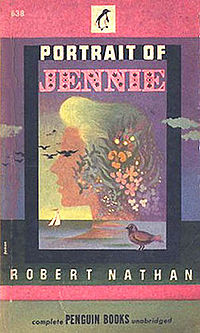
Lee Bowman was an American film and television actor. According to one obituary, "his roles ranged from romantic lead to worldly, wisecracking lout in his most famous years".

WBBM – branded Newsradio 780 WBBM – is a commercial all-news AM radio station licensed to serve Chicago, Illinois. Owned by Audacy, Inc., its studios are located at Two Prudential Plaza in the Chicago Loop, while the station transmitter—diplexed with sister station WSCR—resides in the nearby suburb of Bloomingdale.
KSNB-TV is a television station licensed to York, Nebraska, United States, serving southeastern and central Nebraska as an affiliate of NBC. It is owned by Gray Television alongside CBS affiliates KOLN/KGIN in Lincoln and Grand Island, and CW+ affiliate KCWH-LD in Lincoln. KSNB-TV's transmitter is located near Beaver Crossing, Nebraska. Its news operations are primarily based at a studio located north of Hastings on US 281, with a secondary news bureau and sales office on West State Street in Grand Island. Master control and some internal operations are based at KOLN's facilities on North 40th Street in Lincoln. The KSNB-TV signal reaches Lincoln; in the Tri-Cities area of the market, KSNB-TV is broadcast as a subchannel of KGIN.

KFAB is a commercial AM radio station in Omaha, Nebraska, with studios and offices on Underwood Avenue in Omaha. It broadcasts a news/talk format and is owned by iHeartMedia, Inc.

KXSP is a commercial radio station licensed to Omaha, Nebraska. The station is owned by SummitMedia and it airs a sports format. Most weekday afternoon and evening programming is from local hosts, while during mornings, late nights and weekends, KXSP carries the ESPN Radio Network.

The Nebraska Television Network (NTV) is the ABC affiliate for most of central and western Nebraska. It consists of two full-power stations—KHGI-TV in Kearney, with its transmitter near Lowell, and KWNB-TV in Hayes Center—as well as two low-power stations in McCook and North Platte. NTV is owned by Sinclair Broadcast Group, alongside Lincoln-licensed Fox affiliate KFXL-TV, and operates from studios on Nebraska Highway 44 east of Axtell, about 14 miles (23 km) south of Kearney, with a secondary studio and news bureau at the Conestoga Mall in Grand Island.

Academy Award is a CBS radio anthology series, which presented 30-minute adaptations of plays, novels, or films.

Nancy Gates was an American film and television actress.

Hugh Studebaker was an American actor, born in Ridgeville, Indiana, who starred in old-time radio programs. He was the son of Mr. and Mrs. W.A. Studebaker.
Philip Morris Playhouse is a 30-minute old-time radio dramatic anthology series.
The Dreft Star Playhouse was a daytime radio program in the United States, presenting adaptations of romantic movies in serial form. It was broadcast on NBC June 28, 1943 – March 30, 1945. The show's original title was Hollywood Theatre of the Air, but that changed effective October 18, 1943, "[t]o avoid conflict with similar titles."
Hollywood Star Playhouse is a radio dramatic anthology series in the United States. It was broadcast April 24, 1950-February 15, 1953, appearing on CBS, ABC and NBC over that span.
For the interview program of the same name, see Hollywood Star Time .

The Frank Sinatra Show was a title applied—in some cases specifically and in other cases generically—to several radio musical programs in the United States, some of which had other distinct titles as indicated below. Singer Frank Sinatra starred in the programs, some of which were broadcast on CBS, while others were on NBC.

Staats Cotsworth was an American actor in old-time radio. He is perhaps best known for playing the title role in Casey, Crime Photographer.

Catherine Virginia Verrill was a singer in the era of old-time radio and big bands. Her work included providing the off-screen singing voices for some female film stars.

Louise A. Fitch was an American actress best known for her work in old-time radio.

Margherita Maria Francesca LaCentra was an American contralto singer, best known for her work on old-time radio and her singing with Artie Shaw's orchestra. She also performed as Barbara Fulton.

Harriet Lee was an American radio singer during the Golden Age of Radio in the 1920s–1930s. She was best known as a blues contralto on the Columbia Broadcasting System (CBS) and, later, NBC Radio Networks. Called the "Songbird of the Air", she was named Miss Radio 1931 based on nationwide submittals from radio stations, judged by Flo Ziegfeld and McClelland Barclay, to select the "most beautiful radio artist" for the Radio World's Fair in New York City. Lee was one of the highest paid radio stars that year. She hosted the Harriet Lee show on experimental New York City station W2XAB in 1931, making her one of the first singers to have a show on U.S. television.
Hollywood Showcase is the title of two American old-time radio talent shows, both of which were broadcast on CBS in the 1930s and 1940s. During some intervals, the program was carried only on CBS's west-coast stations.














